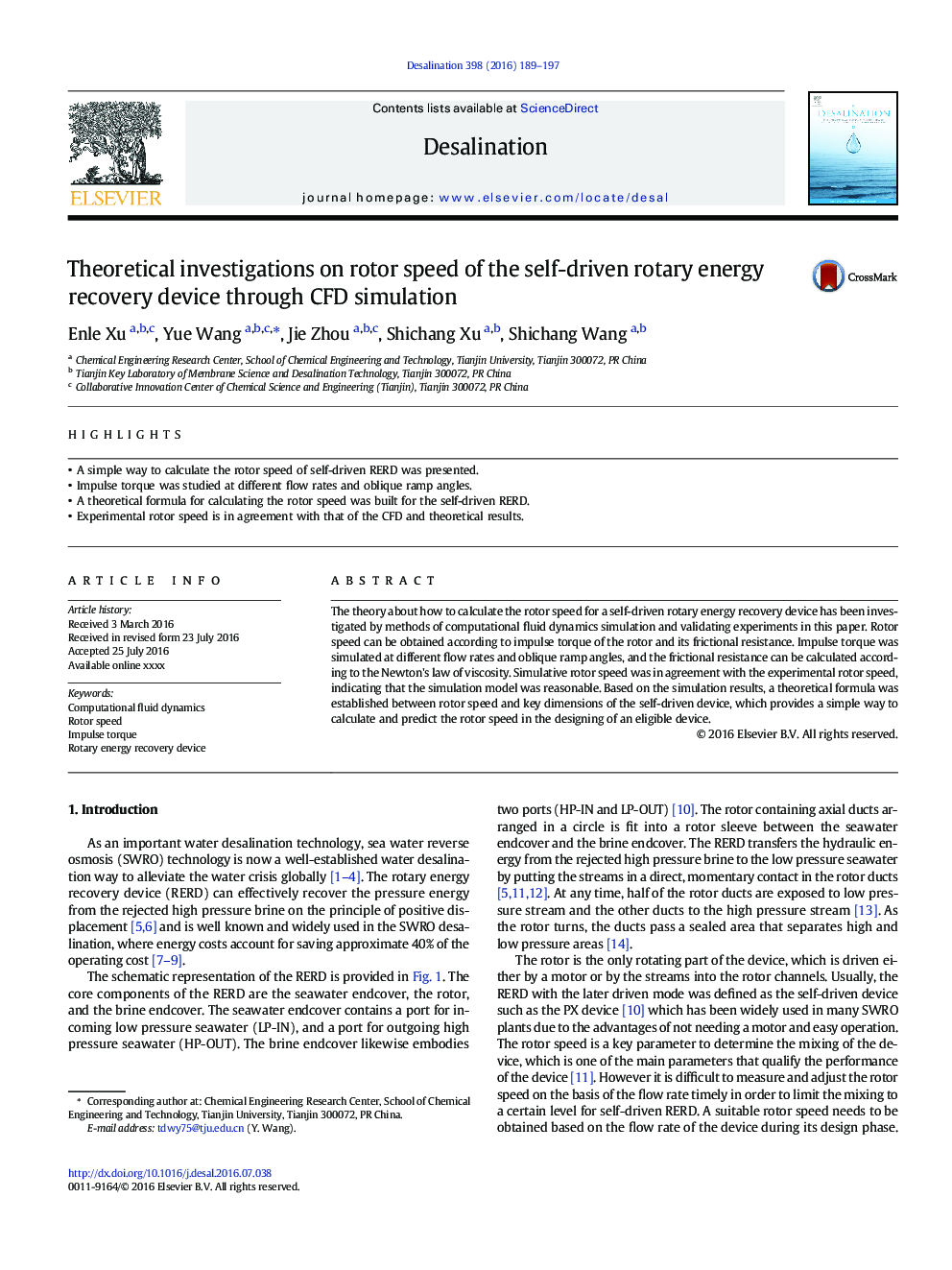| Article ID | Journal | Published Year | Pages | File Type |
|---|---|---|---|---|
| 622705 | Desalination | 2016 | 9 Pages |
Abstract
The theory about how to calculate the rotor speed for a self-driven rotary energy recovery device has been investigated by methods of computational fluid dynamics simulation and validating experiments in this paper. Rotor speed can be obtained according to impulse torque of the rotor and its frictional resistance. Impulse torque was simulated at different flow rates and oblique ramp angles, and the frictional resistance can be calculated according to the Newton's law of viscosity. Simulative rotor speed was in agreement with the experimental rotor speed, indicating that the simulation model was reasonable. Based on the simulation results, a theoretical formula was established between rotor speed and key dimensions of the self-driven device, which provides a simple way to calculate and predict the rotor speed in the designing of an eligible device.
Related Topics
Physical Sciences and Engineering
Chemical Engineering
Filtration and Separation
Authors
Enle Xu, Yue Wang, Jie Zhou, Shichang Xu, Shichang Wang,
